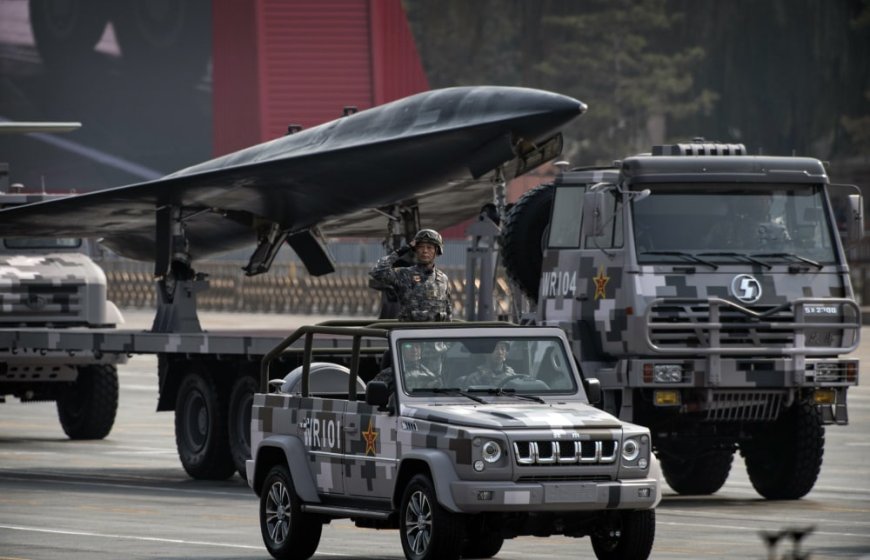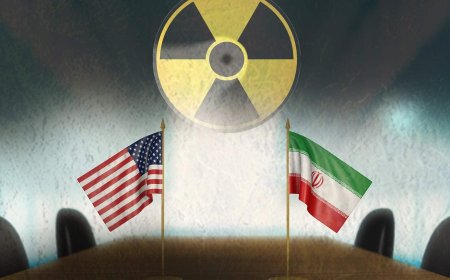China’s Stealth Surge in Military Supremacy: America’s Hypersonic Blind Spot
Since the end of World War II, the United States has anchored its global dominance on a formidable web of military installations and strategic control over geopolitical chokepoints. At the core of this grand strategy lies the unrivaled prowess of the U.S. Navy—a symbol of post-war American might and the cornerstone of its defense doctrine. For decades, this maritime supremacy went unchallenged, until now.

China’s Stealth Surge in Military Supremacy: America’s Hypersonic Blind Spot
Since the end of World War II, the United States has anchored its global dominance on a formidable web of military installations and strategic control over geopolitical chokepoints. At the core of this grand strategy lies the unrivaled prowess of the U.S. Navy—a symbol of post-war American might and the cornerstone of its defense doctrine. For decades, this maritime supremacy went unchallenged, until now.
Beijing’s Methodical Military Awakening
Now the world’s second-largest economy, China has in recent years launched an ambitious, methodical, and well-funded campaign to transform its military-industrial complex—an initiative that the Pentagon now openly labels a “pacing challenge.” Echoing its economic rise—built, many in the West argue, on Washington’s strategic complacency—Beijing appears poised to replicate the same playbook in the military sphere.
Hypersonic Arsenal: A Paradigm Shift
At the heart of this transformation is China’s cutting-edge development of hypersonic missile systems—a technological leap so advanced it renders traditional air-defense frameworks nearly obsolete. With speeds exceeding Mach 5 and maneuverability that defies interception, these missiles are not just a new class of weapon—they are a paradigm shift in warfare. Their mission? Surgical, unpreventable strikes designed to penetrate and neutralize enemy assets before they can even respond.
The Billion-Dollar Blind Spot
For Washington, which continues to pour billions into naval supremacy—aircraft carriers, destroyers, and global maritime dominance—the implications are grim. These floating fortresses, once untouchable, now risk becoming billion-dollar liabilities in the face of Beijing’s hypersonic threat. No existing naval defense system—American or otherwise—can reliably detect or neutralize these projectiles once launched. And China knows it.
PLA’s Multifront Offensive
China's People’s Liberation Army (PLA), aware of Washington's overdependence on maritime muscle, has orchestrated a multifaceted strategy to exploit it. Hypersonic missile systems are just the tip of the spear. Beijing is also heavily investing in drone warfare, autonomous systems, and perhaps most notably, military-grade artificial intelligence. With each passing year, China draws closer to redefining warfare in the AI era—where reaction time is measured in nanoseconds, and human intervention may well be obsolete.
Supercarrier, Superpower: The 2024 Milestone
In 2024, China christened its most advanced aircraft carrier yet—an unmistakable signal that it no longer merely seeks parity with the United States, but maritime superiority. In sheer numbers, China now possesses the world’s largest navy. But numbers tell only part of the story; integration of AI into naval and aerial systems portends a future where Chinese forces could outthink, outrun, and outmaneuver their American counterparts.
The South China Sea: A Live Fire Future
Nowhere is this potential more palpable than in the waters of the South China Sea, where Beijing’s aggressive posturing toward Taiwan, accompanied by increasingly sophisticated military drills, puts the world on notice. These aren’t just saber-rattling exercises—they are stress tests of a rising superpower’s warfighting capability in real time.
America’s Delayed Wake-Up Call
Washington’s belated scramble to develop its own hypersonic arsenal is as much an admission of failure as it is a reaction to one. The U.S. defense establishment, for all its budgetary largesse, has been caught off guard by the speed and scale of China’s military evolution. As the Pentagon races to close the technological gap, it must also confront a sobering truth: it may already be too late to maintain uncontested superiority.
The Hypersonic Horizon: A Global Order Rewritten
In sum, Xi Jinping’s China has redefined the rules of the game. What was once a U.S.-dominated global order is being reshaped by hypersonic deterrence, AI-driven warfare, and a navy no longer content to linger in America’s shadow. The missile trails may not yet be visible, but make no mistake—the trajectory is unmistakable. And the United States must now answer a chilling question it hasn’t seriously asked in decades: What if the next war at sea is one it can’t win?













































